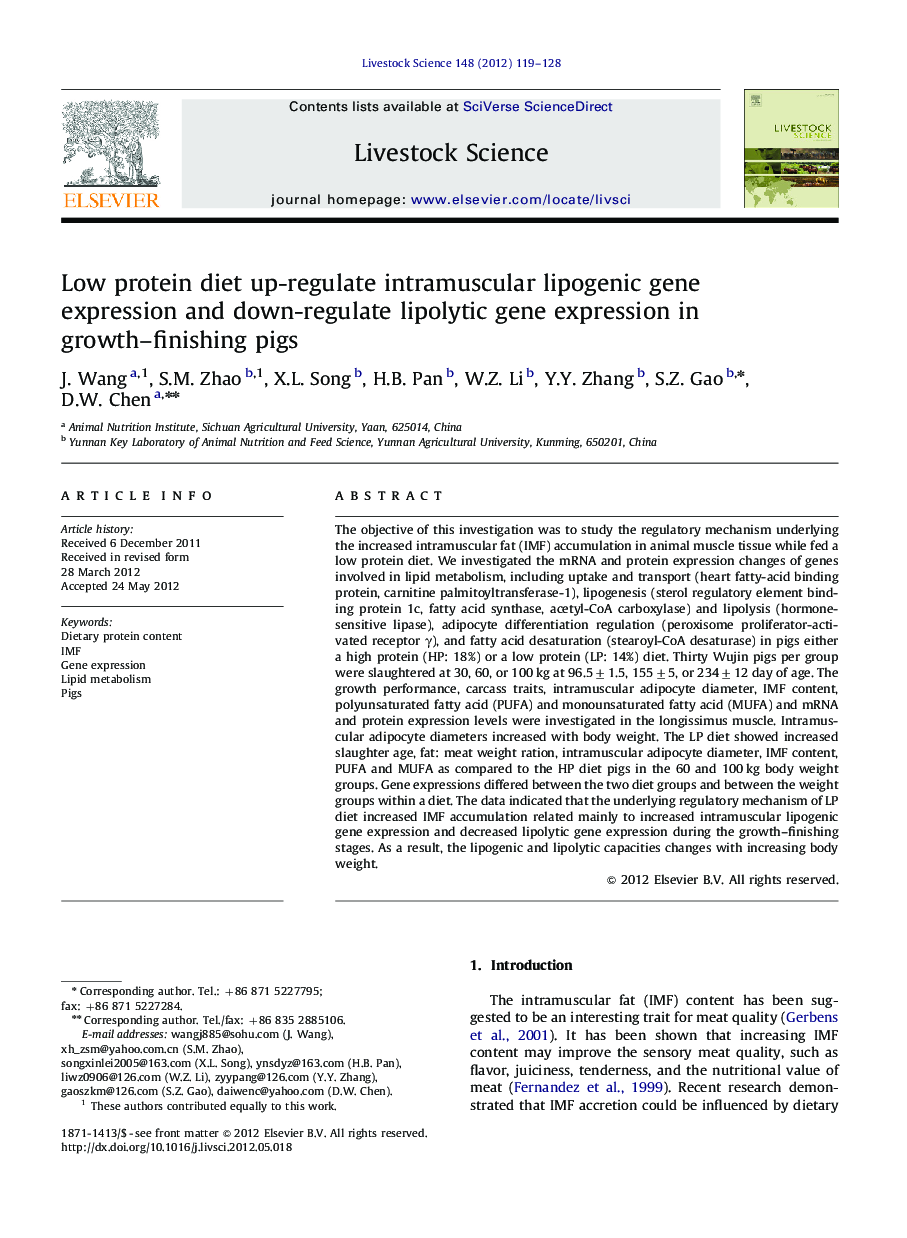| Article ID | Journal | Published Year | Pages | File Type |
|---|---|---|---|---|
| 5790676 | Livestock Science | 2012 | 10 Pages |
Abstract
The objective of this investigation was to study the regulatory mechanism underlying the increased intramuscular fat (IMF) accumulation in animal muscle tissue while fed a low protein diet. We investigated the mRNA and protein expression changes of genes involved in lipid metabolism, including uptake and transport (heart fatty-acid binding protein, carnitine palmitoyltransferase-1), lipogenesis (sterol regulatory element binding protein 1c, fatty acid synthase, acetyl-CoA carboxylase) and lipolysis (hormone-sensitive lipase), adipocyte differentiation regulation (peroxisome proliferator-activated receptor γ), and fatty acid desaturation (stearoyl-CoA desaturase) in pigs either a high protein (HP: 18%) or a low protein (LP: 14%) diet. Thirty Wujin pigs per group were slaughtered at 30, 60, or 100 kg at 96.5±1.5, 155±5, or 234±12 day of age. The growth performance, carcass traits, intramuscular adipocyte diameter, IMF content, polyunsaturated fatty acid (PUFA) and monounsaturated fatty acid (MUFA) and mRNA and protein expression levels were investigated in the longissimus muscle. Intramuscular adipocyte diameters increased with body weight. The LP diet showed increased slaughter age, fat: meat weight ration, intramuscular adipocyte diameter, IMF content, PUFA and MUFA as compared to the HP diet pigs in the 60 and 100 kg body weight groups. Gene expressions differed between the two diet groups and between the weight groups within a diet. The data indicated that the underlying regulatory mechanism of LP diet increased IMF accumulation related mainly to increased intramuscular lipogenic gene expression and decreased lipolytic gene expression during the growth-finishing stages. As a result, the lipogenic and lipolytic capacities changes with increasing body weight.
Related Topics
Life Sciences
Agricultural and Biological Sciences
Animal Science and Zoology
Authors
J. Wang, S.M. Zhao, X.L. Song, H.B. Pan, W.Z. Li, Y.Y. Zhang, S.Z. Gao, D.W. Chen,
